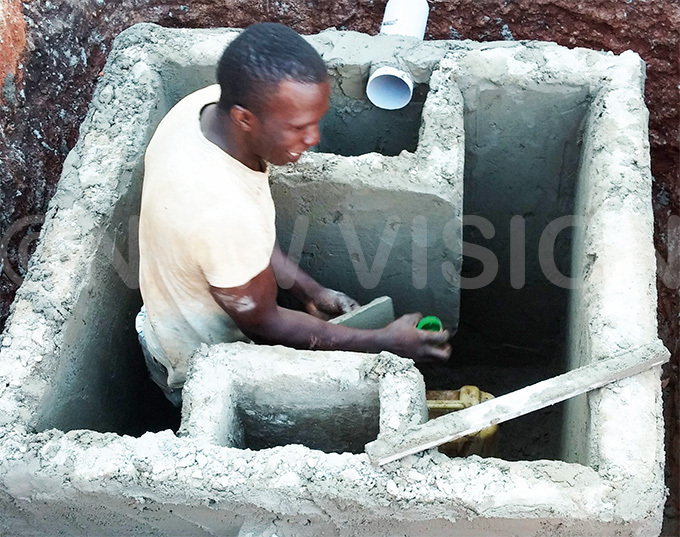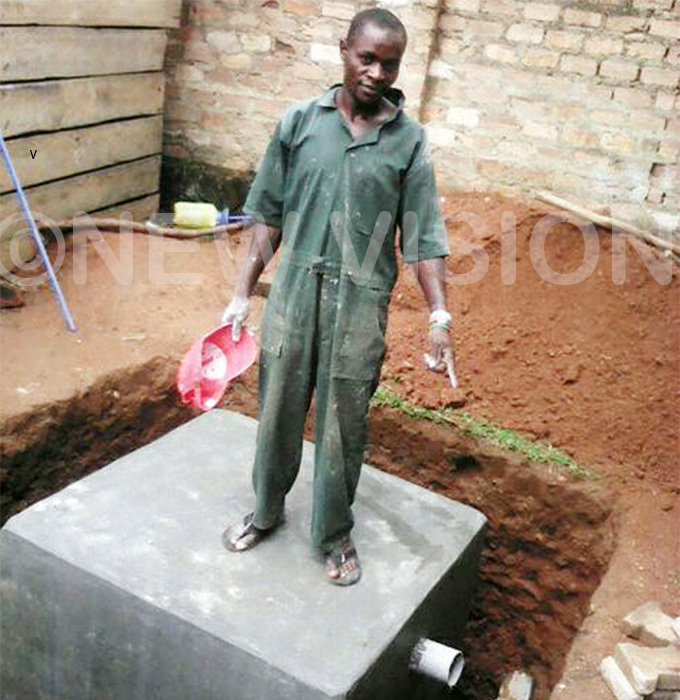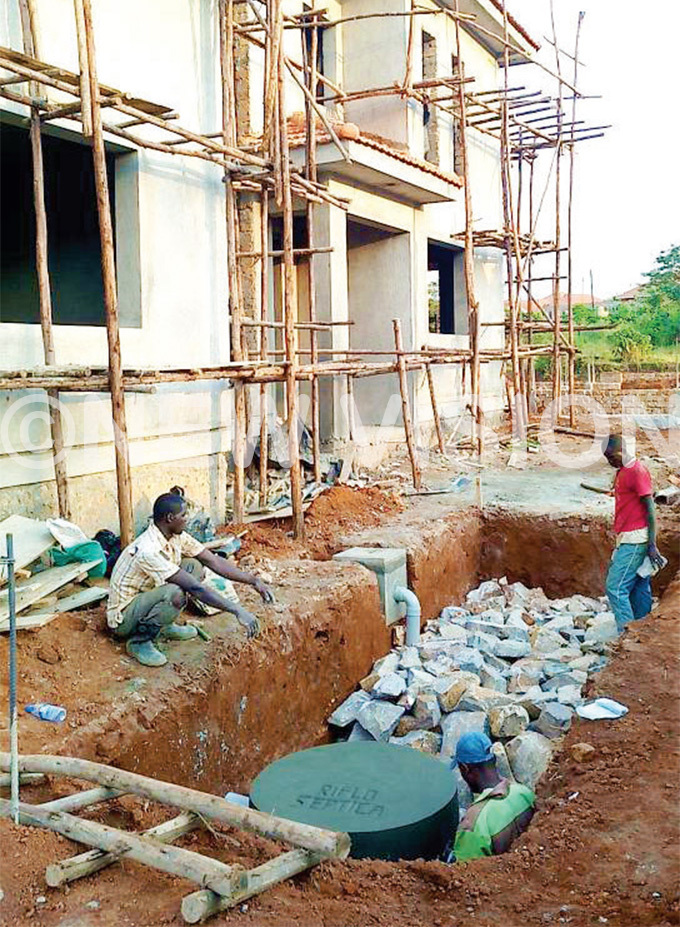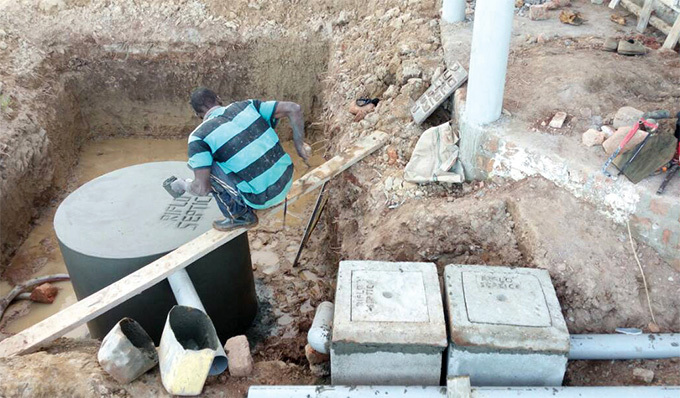Maximise waste with Bio digester
“With a bio digester, you do not need to spend a fortune on building a septic tank or soak pit,” she states.
Upon shifting to her house, Sarah Kiyemba, a resident of Gayaza in Wakiso district says she spent several months using a pit-latrine to her inconvenience.
She had not saved the sh5m needed to construct a septic tank that would allow her to use the flush toilets.
"It was during that time when a friend introduced me to the bio digester system, an economical and sustainable substitute for a septic tank," she says.
This system occupies minimal space and does not emit stench like the ordinary septic tanks.
Besides, the bio digester tanks appear small, but hardly fill up and can be installed in any corner of the home.
Chrissy Ethel Namono, a landscaper with Iconic Hedges located in Ntinda on the outskirts of Kampala, says a bio digester system improves life in any home.
Oftentimes, a small compound is eaten up by a septic tank in one corner and soak pits in another, giving no room for a lush beautiful garden.
"With a bio digester, you do not need to spend a fortune on building a septic tank or soak pit," she states.
Through a process of controlled anaerobic digestion of human waste, the bio digester produces usable sub-products, such as biogas, organic compost and water for domestic use.
 A man constructs a bio digester septic tank
A man constructs a bio digester septic tank
The tank is built in rectangular or square shapes with a thick and strong body of concrete on all sides.
The tanks are designed to be gravity-powered and can be used in all kinds of places, such as wetlands and those on slopes or hills.
"A bio digester is an on-site system, which consumes a small space of 1.1metre diameter by 1.1-metre depth. It takes two metres by one metre depth," Namono says, adding that this system works for residential homes, commercial apartments, schools and estates, among others.
How the system works
Julius Kirumira, the managing director of Home Contractors in Entebbe, Wakiso district, explains that the bio digester tank works well for families, schools and hospitals, among others, because it eliminates the risk of spreading diseases.
He adds that for those with ordinary septic tanks, he can convert them into modern biological tanks by fitting a bio digester.
Kirumira says breaking down the sewage matter takes a few days.
The system consists of an inlet that collects sewage from different points into an outlet that transports it to the soak pit.
A bio digester consists of three main parts; a grease interceptor, a biological digester and a soak pit. It also separates waste into grey and black waters.
 Backfill the main tank after construction
Backfill the main tank after construction
Black water contains solid matter from the toilets while grey matter is one collected from the kitchen, hand wash basins and laundry.
After flushing the toilet, the matter goes through a pipe system. The black water is then directed to into the bio digester, which uses naturally occurring anaerobic bacteria to treat it by digesting the matter while eliminating the disease-causing organisms.
Grey water is a combination of fats, oils, greases, waxes and detergents, which make it chemically unstable and, therefore, not fit for the bio digester.
It is, instead, passed through a grease interceptor to get rid of fats, which can be harmful to the environment.
Kirumira explains that after the chemicals have been sieved from the water, it is directed to the soak pit, which allows it to sink through the stones into the ground
"The faecal matter and other organic matter settle at the bottom of the tank through a sedimentation process and are converted by the bacteria into water and gas," he elaborates.
The sedimentation process, which breaks down organic matter into water, carbon dioxide, nitrogen and methane starts as soon as the sewage is flushed.
The process eliminates carbon dioxide and methane gases, leaving nitrogen-rich water that is good for plants.
However, further treatment of the water is required to make it fit for domestic use.
The methane gas produced can be used for cooking and for other energy needs. However, it has to be generated from big projects, such as schools and hospitals, among others.
Maintenance
Bio digesters are sustainable because they are easy to maintain so long as the three simple necessary activities to keep the system efficiently working are respected:
No plastic or other solid material must be thrown into the toilets. They may block the connection to the bio digester.
 Bio digester tanks appear small, but hardly fill up
Bio digester tanks appear small, but hardly fill up
They may also affect the production of gas and make difficult the dislodging operation. However, hygienic paper can be thrown into the toilet.
On the other hand, once the system starts to produce gas, it should be used often in order to keep the anaerobic process equilibrated and to stop the gas from going through the water outline pipes.
The solid waste should be dislodged once every two to three years. An excessive leaking of water is a sign that this operation is needed. For a bio digester built for schools, with an average use of 50 students per toilet per day, it is necessary to dislodge the solid part once every two to three years.
The cost
According to Kirumira, a one-cubic-metre tank that can serve from one to 21 people daily can be installed within four working days at sh2m.
One tank of two cubic metres that can serve one to 50 people can be installed at sh4m.
A bio diversity system of three cubic metres that can serve 200 people or more can be installed within nine working days at sh4.5m.
One of four cubic metres that serves between 600 and 1,000 people can be installed at sh5m.
Bio digester parts
A bio digester consists of three main parts; a grease interceptor, a biological digester and a soak pit. It also separates waste into grey and black waters.
Black water contains solid matter from the toilets while grey matter is one collected from the kitchen, hand wash basins and laundry.
 A man plasters a bio digester septic tank
A man plasters a bio digester septic tank
After flushing the toilet, the matter goes through a pipe system. The black water is then directed into the bio digester, which uses naturally occurring anaerobic bacteria to treat it by digesting the matter while eliminating the disease-causing organisms.
Sedimentation
The sedimentation process which breaks down organic matter into water, carbon dioxide, nitrogen and methane starts as soon as the sewage is flushed.
The process eliminates carbon dioxide and methane gases leaving nitrogen rich water that is good for plants.
However, further treatment of the water is required to make it fit for domestic use.